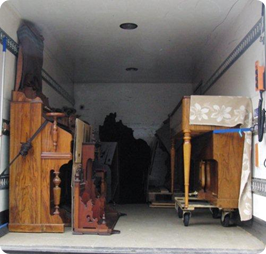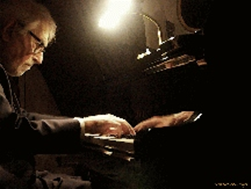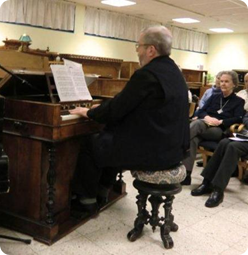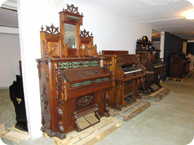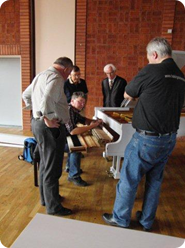klaverens hus 
We are still working with this site. Plaese, check the changes regularly.  Ändra den här texten genom att klicka på "Redigera" |
About the Klaverens Hus Klaverens Hus is a museum of such keyboard instruments for which we no longer have any domestic factories for uprights, square pianos and grand pianos (hammer instruments), harmoniums and reed organs and their respective self-playing variants. Always fighting against time when too many good instruments are dumped or exported to be rebuilt (another kind of destruction when only the case is left of the original instrument), we are building up a collection of keyboard instruments and objects belonging to our industrial heritage from the important piano and reed organ factories we had in great numbers that is unique for Sweden and maybe also for the rest of the world. Therefore, saving instruments and craft knowledge and spreading information of our keyboard instrument culture through times is our most important task. We do this by public activities, publications, courses etc. A collection of this kind is a national resource both for instrument technicians especially when it comes to early constructions and for musicians who seldom have the possibility of playing piano music on the instruments it was written for. Those of our instruments that play are regularly used at our concerts. It is our ambition to augment the number of sounding instruments successively and thus broaden the basis of the constantly ongoing musical and technical research that is necessary to understand the connection between sound, playing technique and music from periods that lie before the present time we live in ourselves.
Why then old keyboard instruments? They have other qualities than the modern ones and are thus ‘time engines’ to music. Hammer instruments with the old aesthetics have a clear, light and ‘transparent’ sound through the whole compass with a light touch and a narrower octave. The effect is another touch feeling and easiness of playing cords. An instrument that is contemporary with the music for which it was written is the best teacher how to interpret and play it. To the listener this means a stronger experience of the music people earlier thought themselves to be familiar with. Internationally, early keyboard instruments represent a great and important field of research where there is a raising awareness of the importance and development of 19th century pianos. In Sweden, we cannot take part in discussions and co-operation projects without the important collections of instruments and industrial heritage we now have together with all the activities it gives rise to at the Klaverens Hus. The lorry after one of our many trips for picking up instruments all over the country.
|
